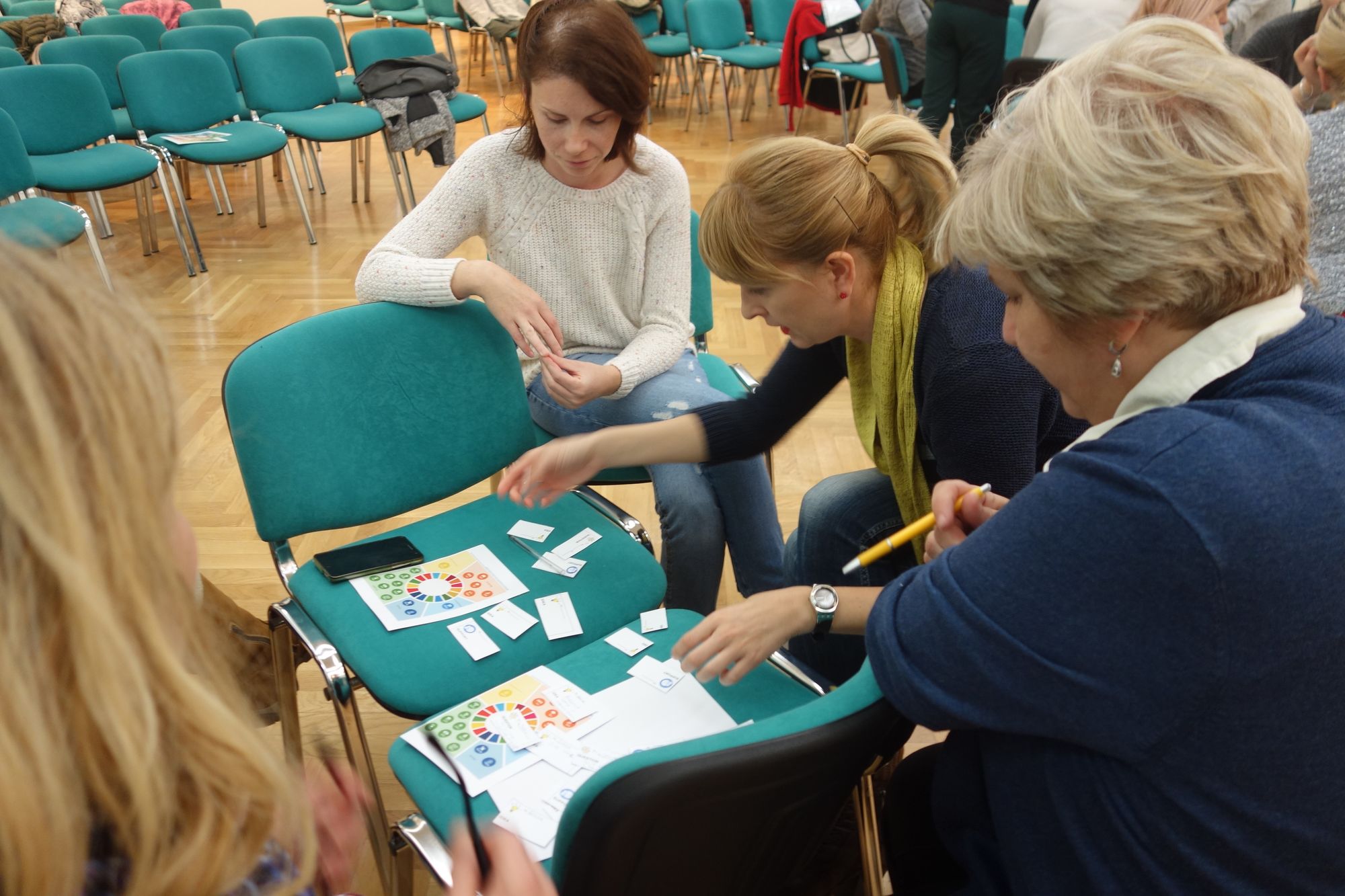DialoGame is a structured, dynamic and low-friction method designed for conducting dialogue across and among disciplines. It provides a gamified environment for focused discussion and knowledge extraction.
By this gamified approach, we seek to empower, motivate and educate efficient behaviors in dialogues.
The DialoGame format is based on the usage of physical artifacts like talkens (talking tokens), activity cards, creative cards, visualization, but also interactive socio-technical components like ColaboWare HCI (human-computer interfaces) as RFID cards, remote controllers, touch screens. It is augmented and visualized by interactive online mapping tools (KnAllEdge maps, RIMA and several other modules of Colabo.Space).
It aims for concrete outcomes and results at least on one of the following levels: (i) commitment and action, (ii) transforming and enriching knowledge space, (iii) co-creation of an engaging multimedia art integrated with the topic (usually a scientific or social topic) that helps communicate (and promote) it to society.
DialoGame is designed and researched according to Participatory Design (Simonsen & Robertson, 2012) and Action Research (Stringer, 2013). Its first version was developed by ChaOS and ReMaking Tesla team, then tested in a real dialogue with workshop participants. Based on it our team learned through subjective and objective reflections, and rebuilt it into a new version, tested the new version, etc. All of this was repeated in diverse CoPs (Communities of practice).
The motivation for building this format and implementing it into the Colabo.Space ecosystem comes from the need for an effective yet appealing dialogue (appealing both for the participants and the audience). In our experience, dialogue tends to either be appealing but ineffective and unstructured or unappealing or even both unappealing and ineffective.
This dual balance led us to concepts like talken - a card, that gives a speaking time-slot to its owner. Following the need to limit time per speaker in such a manner that they do not feel limited, we came up with an approach where each participant gets a certain amount of talkens (talking tokens) in the beginning, each giving them a specific amount of time to talk. By this, the speaker is motivated to play with his or her time/talkens, to distribute that time across the dialogue span, to wait for the right interaction, instead of imposing himself.
Another principle we introduced is defining a title (keyword) for each talken before it is played by its owner. This dramatically focuses the conversation and helps participants and audience to follow the dialogue.
The dialogue starts with one or several starting challenges (questions). When using a talken to start talking in the dialogue a participant must choose: (i) to which particular challenge or previously put talken he wants to relate his talk, (ii) a title for his talken, (iii) an action with which he wants to connect his talken to the chosen talken/challenge. The available predesigned actions are displayed at the illustration below. We will not explain each specific action here, but to explain by an example that action/card “Support” give extra time to the current speaker by the participant who uses it - thus enabling loosening of the dialogue structure, if the flow of dialogue invites it.
Each participant gets the set of cards at the beginning of the dialogue (virtual or physical ones- depending on if played in face-to-face or mobile (face-to-virtual) mode). The cards consist of a predefined number of talkens, and action cards, limited number per each action.
Additionally, we have introduced specific phases and limited the actions available for each phase. All of these guides and mediates the progress of the dialogue and increases the level of connectedness, interaction, and shared activities.
These concepts enable a proactive approach toward mapping offline dialogues into IT-systems like Colabo.Space, which is otherwise a very tedious task. It also resolves several issues of friction between the participants and the augmenting system enabling seamless communication. It is additionally supported by announcing the method requirements to be "the rules of the game", by gamifying the obstacles that cause friction (in the same manner as a tennis player does not see the net as a friction in the process of playing tennis).




